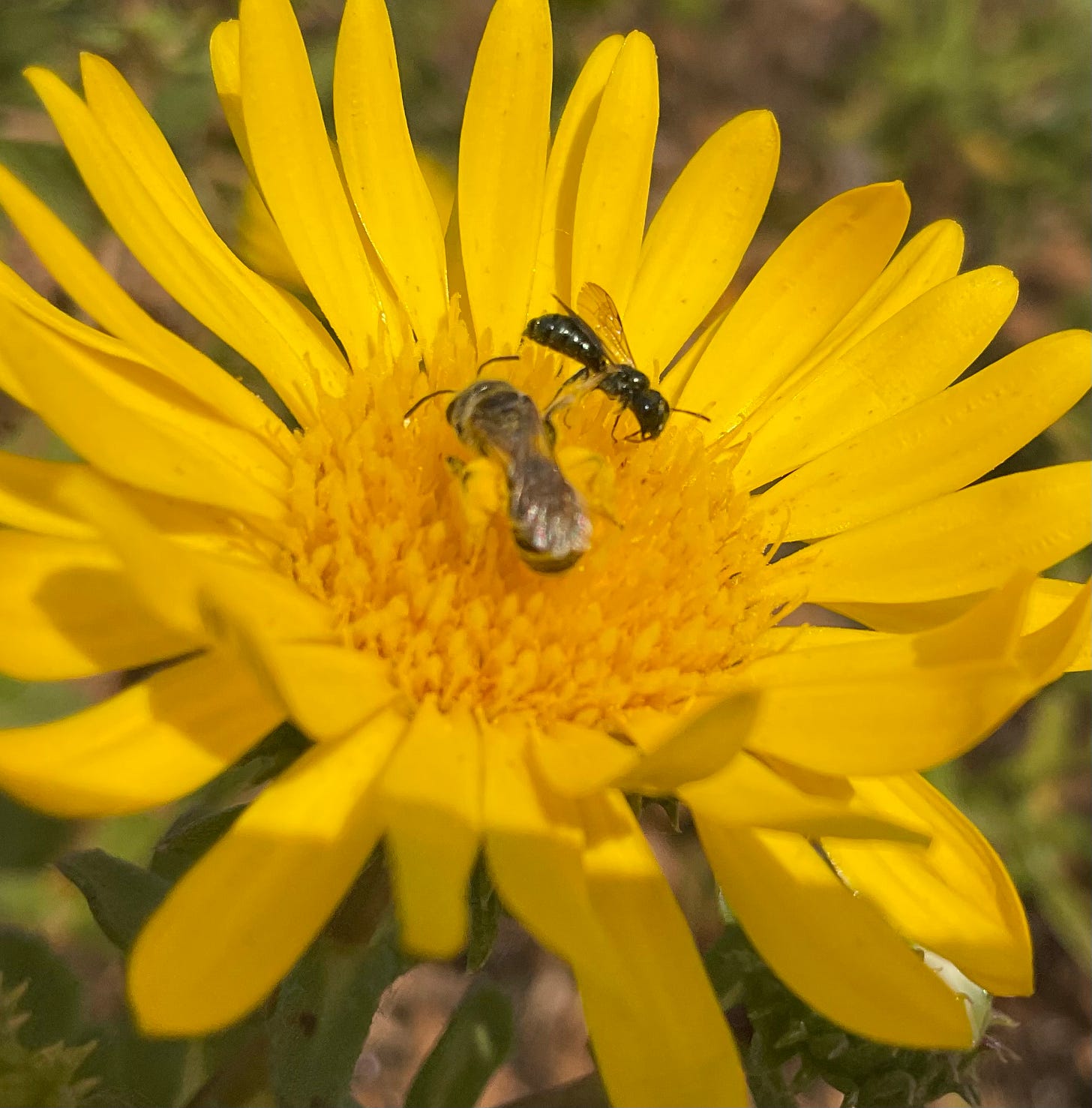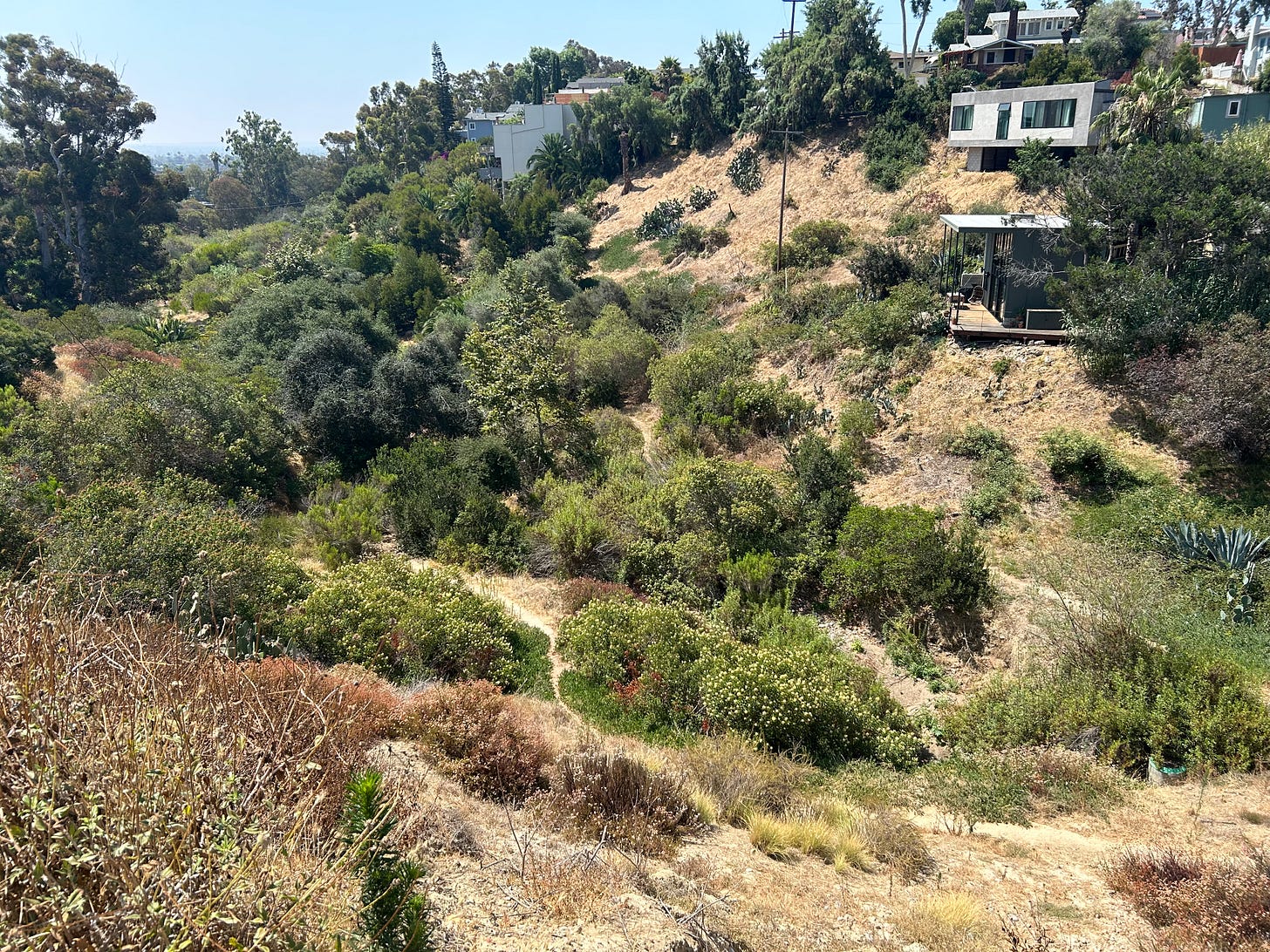Invasive species: there isn't an upside
Some folks say we should reevaluate how we think of invasive species. I'm not convinced.
Besides giving me a platform for my writing, I really appreciate Substack because it fosters a community of writers and creators who are curious about and supportive of each other. Although I’ve been the recipient of disparaging remarks and insults from a few, the tenor on this platform has been overwhelmingly polite and collegial, even when we writers disagree with one another.
Right now, I’ve found myself strongly disagreeing with
, a popular Substack writer who produces The Weekly Anthropocene, which presents the upside of the environmental movement, stories of solar or wind power successes, or spotlights on breeding crops to withstand the effects of climate change. I’ve been a big supporter of Sam, and I believe that he provides a wonderful voice of hope on the environment. I’ve also had a similar polite disagreement about nonnatives and invasives with , the Substacker who produces Speaking For the Trees No Matter Where They’re From.Before continuing, I’d like to thank Sam for agreeing to let me air my concerns about The Weekly Anthropocene post of July 8. His openness proves what I said about the Substack community. On reading the title of the post, “Even the “World’s Worst” Invasive Species Often Aren’t Actually Bad,” my conservation-oriented brain just about exploded. This post concentrates on about a dozen species chosen among the 100 of the World's Worst Invasive Alien Species that were identified by the International Union for the Conservation of Nature, a list compiled almost 25 years ago. Among the species that Sam identifies as unproblematic invasives are zebra mussels, tamarisk, and wild boars.
Sam acknowledges the extreme harm that introduced diseases can have, such as Dutch elm disease or the fungus that has almost totally extirpated the American chestnut. He admits the havoc invasives can have on islands, as happened with the brown tree snake killing off almost all the birds on Guam. But he dismisses concern of the damage that so many invasive species cause, saying that “many, if not most, of the ‘World’s Worst’ invasive species on that least (sic) have actually turned out to be harmless or even beneficial to their adopted ecosystem.” My brain exploded again reading that sentence. You may as well have told me that cancer has an up side.
The basics of nonnative species
Before we take a look at Sam’s defense of invasives, let’s establish what an invasive species is. First of all, a nonnative species is any organism—insect, bird, plant, even bacterium—that has been introduced into a new environment. Nonnative species, in and of themselves, are not problematic. Here in Southern California, we have Moreton Bay fig trees from Australia and magnolia trees from the American South. Folks plant these trees, but they tend not to spread or reproduce or affect the ecology. They don’t cause any problems.
Invasive species are nonnatives that cause harm. They can be harmful ecologically or economically, or harmful to human health. An example of an invasive species affecting human health is the Australian backyard mosquito and other mosquitos of its genus (Aedes), that are now here in North America. These mosquitos carry zika, dengue, and yellow fever, diseases that have not traditionally plagued the continental U.S. What mostly comes to mind when we speak of invasive species are those that grow and reproduce quickly and spread aggressively.

Personally, I have mapped and surveyed invasive species, such as iceplant (Carpobrotus edulis), which carpets the sides and medians of much of Southern California’s freeways. I’ve also been down on the ground, cutting out invasive giant reed (Arundo donax), helping local conservation efforts. I initiated an investigation into the control of nonnative sea lavenders, invasive species that threaten our Southern California estuaries. The work of our research was recently published in the scientific journal Wetlands Ecology and Management.
Kudzu
In his July 8th post, Sam stated the invasive vine kudzu, is “not as fearsome anymore,” now confined to roadsides and no longer encroaching on southern forests, yet I was unable to find any literature supporting this claim. What I do know is that many still consider the Asian vine that was introduced to the U.S. in the late 1800s to be a problem. A number of states still consider it a noxious weed.
About 15 years ago, researchers estimated that kudzu cost the forest industry from $100 million to $500 million in lost forest productivity. More recently, kudzu has been expanding beyond the South. As it spreads further into Oklahoma, the Sooner State can expect to lose more than $160 million a year because of the invasive vine. The vine also carries plant diseases, such as soybean rust. Presently, probably due to climate change, it is expanding north, even into Canada.
The bigger, and smaller, picture
Numbers can deceive. Looking at 100 invasive species, or the few mentioned in The Weekly Anthropocene, can give the impression that there aren’t a whole bunch of these problematic species, but there are thousands, and they cause a lot of damage. Invasive species cost the U.S. more than $162 billion a year in farm and other industry productivity. Worldwide, the cost of invasives is estimated at $423 billion, annually.

From my personal experience, here in San Diego, we are overrun with nonatives and invasives, so much so that entire canyons are choked with exotic species. Mountainsides and valleys that once thrived with chaparral and coastal sage are now blanketed with nonnative grasses. I know folks like Sam and Kollibri want to give folks hope and to see a better world. But we can only make a better world if we are clear eyed about our environment and its problems.
X (You can find me on that thing formerly known as Twitter.)
The Sons of the pioneers sing longingly about tumbleweeds, invasive species from Russia.




Non-native species become invasive as they adapt to a new environment where they don't experience the predator and parasite loads that they face in the environment where they evolved. In the bell-shaped distribution among plants of a certain species, for example, those that allocate fewer resources (such as chemical defenses) to deter herbivores will have more resources to devote to reproduction or outcompeting native rivals. The gene distribution shifts over several generations species and the plants become increasingly prolific. That's why we often see a lag of several decades before a species explodes and becomes a real pest. To date, many invasive species have become major pests along waterways and riparian areas. I'm concerned that the "California friendly" plant species being promoted now will increasingly swamp our upland habitats later in this century, and we will look back and ask, "How could we have been so stupid?" as we do today for Aurndo, pampas grass, and their ilk.
I should get into this conversation, as I have thoughts on the subject, many of them. I will add more if I have time.
In New Zealand, we have the example of gorse. It's invasive, it's costly, it's altering native habitats, it's costing farmers millions of dollars, it's one of New Zealand's worst weeds, it's displacing native species, it's encouraging fire, it's allowing native forest to regenerate, it saved an endemic insect from extinction... it's complicated.
That's the thing with many non-native, including invasive, species. Most have good and bad points, with how much good and how much bad depending on what they are, where they are and what the values of the person looking at them are. There are species which I'd call invasive in New Zealand which I believe should only be controlled under very limited circumstances, either because they aren't that harmful or because controlling them harms other things (an example would be Cytisus proliferus). There are species which I believe could be controlled to great benefit and minimal harm almost everywhere they occur in New Zealand, such as rats and possums (one rat species should be preserved on some offshore islands for cultural reasons though). But there are such large areas affected that we can't do it all.
This is why decisions about managing invasive species aren't, or shouldn't be, taken lightly. In my experience, most of the people making decisions about invasive species management get the point about prioritising both which species are controlled and where they are controlled, both because of limited resources and because they need to be sure that they are doing more good than harm. However I think that the scientists sometimes lose the nuance in the debate because they aren't having to make difficult management decisions.